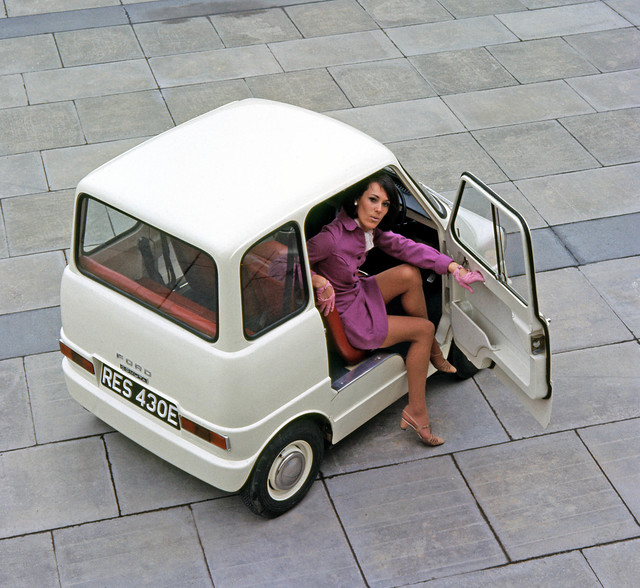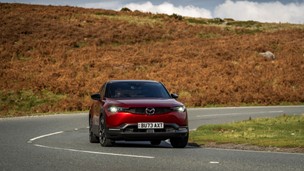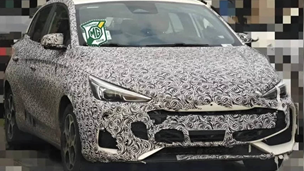Amongst all the facelifts and new trim levels, every motor show will have at least a handful of true concept cars. Sometimes they give us a glimpse at the future design direction of a manufacturer and sometimes they will hint at an upcoming trend. But every now and again, they will try and predict the future and often they will look completely bonkers.
It’s a tricky business. Get your predictions way off the mark and future commenters will snigger. But get your concept car uncannily ‘right’ and the rewards can be huge. Buckle up, you have to break a few eggs to make an omelette…
Ford Comuta
Unveiled: 1960s
Ahead of its time: Definitely
Modern equivalent: Nissan LEAF
Electric cars aren’t new. In fact, some of the earliest cars were actually powered by simple batteries, but the Ford Comuta was a real precursor to the modern-day EV, which could have been mass produced if it had been given the go-ahead.
A British experimental vehicle dating back to the 1960s, the Comuta had just four 12-volt lead batteries, giving it a range of about 37 miles. It wasn’t fast either, with a top speed below 40mph and a recommended cruising speed of 25mph to reach its maximum range.
But it would have offered fuss-free transport in urban areas, and its tiny length even meant it beat the Smart Fortwo to the trick of parking two cars in one parking space.
Bertone Lancia Stratos HF Zero
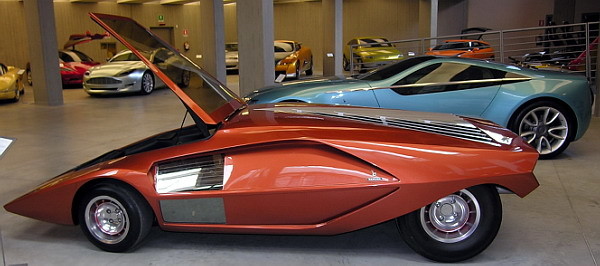
Unveiled: 1970
Ahead of its time: Yes, and no
Modern equivalent: Lamborghini Huracan
The 1970s was a great time for motoring pin-ups, and the wedge-shape was king: just think Lamborghini Countach, Lotus Esprit, Ferrari Dino and Aston Martin Lagonda. But, this Bertone concept from the 1970 Turin motor show possibly beats them all for sheer drool factor.
Almost impossibly angular and low to the ground, the Zero featured an opening windscreen, requiring its occupants to literally step inside, over its front wings. As for today’s pedestrian safety and crash legislation, there could be one or two issues with the Zero’s razor-sharp nose. As for parallel parking, good luck with that!
But there are glimpses of genius here, and not just the drop dead gorgeous looks. Inside there’s a huge glass instrument panel, which looks strangely reminiscent of the tablet found in the Tesla Model S. Perhaps Elon Musk covets the Zero?
Aurora safety car
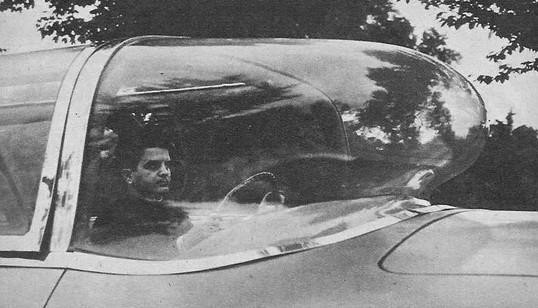
Unveiled: 1950s
Ahead of its time: Yes, if you can look past its ugly exterior
Modern equivalent: Volvo XC90
The Aurora isn’t the fruits of a huge multi-national car maker, but a Catholic priest. Yes, New Yorker Father Alfred Juliano was so perturbed by road deaths that he went bankrupt creating a prototype showcasing safety devices.
Built on a Buick platform, it looks like a car only Homer Simpson could love. The windscreen bulges outwards so your head can’t hit it, the dashboard was padded and, best of all, the front seats could swivel rearwards, should you feel a collision seemed unavoidable.
But it wasn’t all bad. The Aurora also featured ideas found in many modern cars today, including seatbelts for every passenger, crumple zones and a collapsible steering column. Its spare wheel even helped absorb collisions.
Ford Nucleon
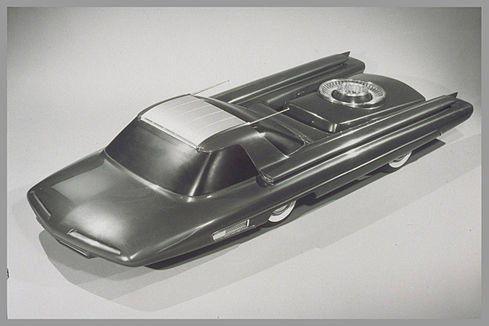
Unveiled: 1958
Ahead of its time: Still ahead of its time in 2016
Modern equivalent: Tesla Model S
Imagine a time where nuclear power seemed to have all the answers. A seemingly endless and clean supply of power to fuel the booming First World, which could even give a submarine an almost endless form of propulsion. It must have been only logical to conclude that the very same technology would eventually be small enough to fit in a car.
The Ford Nucleon was a scale model with a mock-up uranium fission reactor in the back, and a cab-forward passenger cell up front. The vision was for the reactor to power a steam engine, which we could imagine being rather splendid on the motorway. But, starting the fission reactor and steam engine to pop out for a pint of milk? Perhaps it would be easier to take the hoverboard instead…
Alfa Romeo Sportut by Bertone
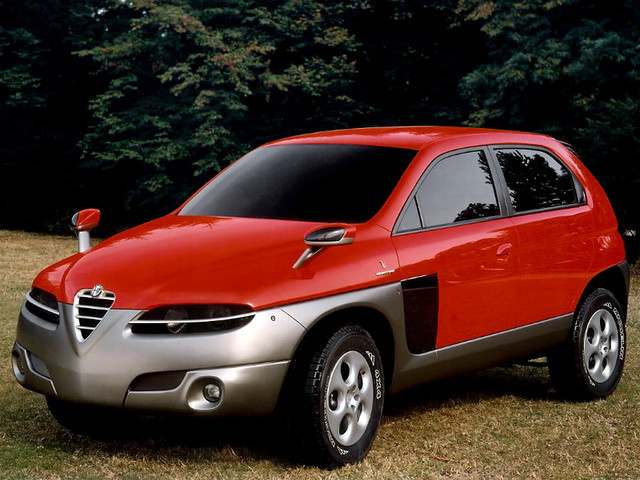
Unveiled: 1997
Ahead of its time: Basically predicted the crossover
Modern equivalent: Nissan Juke
Yes, it’s another entry for Bertone, the Italian styling house. This time they were commissioned by Alfa Romeo to create the Sportut concept, unveiled at the 1997 Geneva motor show. Based on the underpinnings of the Alfa 155 hatchback, it was a non-running styling exercise.
But boy did it predict the upcoming crossover trend. Sadly, Alfa must have not had the wherewithal or desire to go ahead with the Sportut, because it was Nissan which really got the crossover ball rolling with the Juke 13 years later.
With stylish raised mini-SUV looks, a smallish 2.0-litre, 148bhp engine and hidden rear door handles, the Sportut almost wouldn’t look out of place in a showroom today. Just ditch those wing-mounted door mirrors and make the tyres a bit skinnier…
General Motors Firebird XP-21
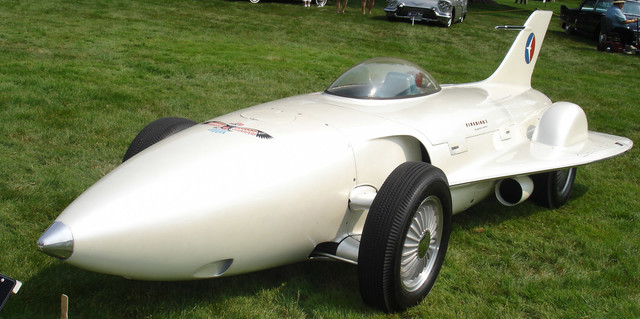
Unveiled: 1953
Ahead of its time: We’re still unconvinced
Modern equivalent: A plane?
And mainly to justify the use of the word ‘bonkers’ in the intro, behold the GM Firebird XP-21! And, while you may think, so GM stole a fighter jet and stuck some wheels on it to one-up rivals Ford, there’s actually a lot more to this project.
In fact, GM was testing a whole new form of propulsion: gas turbine engines. Incredibly, research into their viability began as early as the 1930s, but it wasn’t until 20 years later that GM built such a power plant. With two ‘gears’ the 370 horsepower gas turbine expelled a wake of hot gases at over 600 degrees centigrade.
Project leader Emmett Conklin once tested the experimental vehicle up to speeds of 100mph, but when he attempted to shift into second gear, the torque was so great it spun the wheels and the run was aborted.
Still, it wasn’t all folly. The concept spawned the Firebird II, a more practical four-seat design, with a 200 horsepower gas turbine which fed its exhaust heat through a regenerative system, hopefully avoiding third-degree burns to pedestrians. It was also the first car to have disc brakes at each corner, with fully independent suspension.
Not only that, but GM predicted it would drive along “the highway of the future”, with an electrical circuit embedded in the road to help guide cars and send signals to each other to avoid accidents. Sound familiar?
Find prices for cars you can buy today
